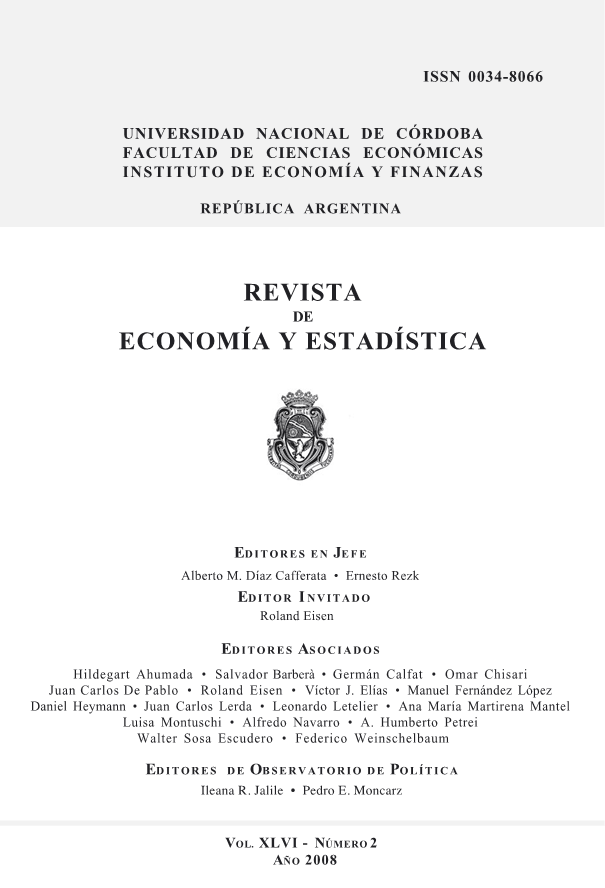On Growth and Income Distribution in a Globalizing World
DOI:
https://doi.org/10.55444/2451.7321.2008.v46.n2.3851Keywords:
economic growth, income distribution, globalizationAbstract
The basic idea explaining the relationship between economic growth and income distribution is the “U- shaped hypothesis” postulated by Simon Kuznets. This can be shown in a dual-economy model with technical progress. Initially, inequality is low, but as labour participation in the modern sector increases, higher wages in this sector tend to increase inequality. However, if enough labour is incorporated in the modern sector, wage inequality begins to diminish. Income inequality continues to worsen between the two sectors, if a new modern economy (e.g. IT-based technical change) is introduced and potential GDP shifts to a new trajectory before the turning point is reached. In a globalised word, the substantial unskilled-labour-saving technical progress puts pressure on wages of unskilled workers (in industrialized countries). Also, globalization may be blamed for leaving many nations and millions of people out from reaping the benefits of globalization. This problem can only be overcome by appropriate reforms of the international economic system.
Downloads
Downloads
Published
Issue
Section
License
Copyright (c) 2008 Roland Eisen

This work is licensed under a Creative Commons Attribution-NonCommercial-NoDerivatives 4.0 International License.
Authors who have publications with this journal agree to the following terms:
Authors retain their copyright and grant the journal the right of first publication of their work, which is simultaneously subject to the Creative Commons Attribution-NonCommercial-NoDerivatives 4.0 International License that allows third parties to share the work provided that its author and first publication in this journal are indicated.
Authors may adopt other non-exclusive licensing arrangements for distribution of the published version of the work (e.g. depositing it in an institutional telematic archive or publishing it in a monographic volume) as long as the initial publication in this journal is indicated.
Authors are allowed and encouraged to disseminate their work via the Internet (e.g. in institutional telematic archives or on their website) before and during the submission process, which can lead to interesting exchanges and increase citations of the published work. (See The Open Access Effect)














